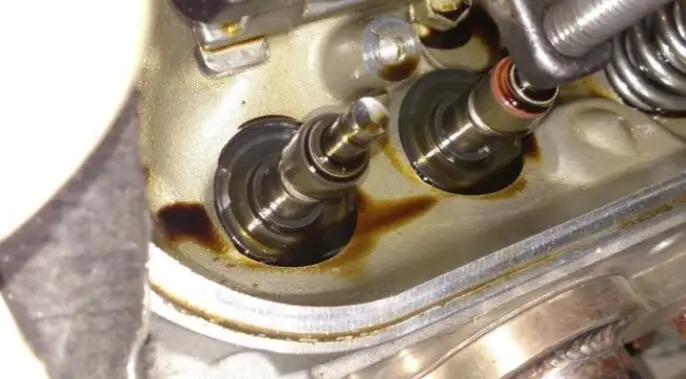As an Amazon Associate, we earn from qualifying purchases. This does not affect the price you pay or the quality of the products you buy. For more information, please read the full affiliate disclosure here.
Is your generator surging and disturbing your peace, making you inconvenient? Don’t worry, this article explains all it takes to fix this issue in simple ways.
Generator surging refers to a specific issue that can occur with all types of generators, especially gasoline generators.
It is known as a condition where the generator’s engine repeatedly speeds up and slows down in response to varying electrical loads.
When the generator is subjected to changing loads, such as when appliances or equipment are turned on or off, the engine may experience surges in RPM (revolutions per minute).
This can mess with the power output, making your lights flicker, appliances act weird, and the engine sound goes all over the place.
Generator surging as the case may be can be caused by several factors, such as improper fuel mixture, dirty fuel filters, a malfunctioning governor, or inadequate engine speed control. When you experience anything like this, you must address the issue of the generator surging promptly to prevent potential damage to the generator and to ensure stable and reliable power output.
Hence, we’ll discuss more on the causes of generator surging, what can you do to fix the issue, and how you can prevent it from happening in the future.
What’s Causing Generator Surging?
1. Fuel-related Troubles
1.1. Fuel Quality: The fuel you use matters. Whether it’s old gasoline or something else, make sure it’s not contaminated or stale. Using crummy fuel messes up the combustion process and makes your generator surge. It can even introduce contaminants or moisture that mess with your generator’s ability to burn fuel efficiently.
1.2. Fuel Filter: The fuel filter is there to keep your generator safe from dirty fuel. If the filter gets clogged or dirty, it restricts the fuel flow to the engine, messing with its performance. This means there won’t be enough fuel supply to your generator, and the engine struggles to keep a consistent RPM, leading to surges.
1.3. Fuel System Blockage: When the fuel system gets blocked, it creates obstacles in the fuel lines or carburetor jets, disrupting the fuel flow. It’s similar to having a clogged or dirty fuel filter. The result? Your engine gets inconsistent amounts of fuel, and that leads to surging.
2. Carburetor Issues
2.1. Carburetor Adjustment: Here’s the deal with carburetor problems. If the carburetor is not properly adjusted, like having the wrong fuel-to-air mixture, you’ll get surging. If the mixture is too lean (not enough fuel), the engine struggles to keep a stable combustion process, causing surges. And if the mixture is too rich (too much fuel), you’ll still get surges because the fuel combustion isn’t complete. So, it’s all about finding that sweet balance.
2.2. Carburetor Blockage: Dirt, debris, or varnish buildup in the carburetor can mess with the fuel flow. If there’s no fuel filter to keep them out, they’ll enter the carburetor and ruin the fuel-air mixture. And guess what? That leads to surging because the engine’s combustion process is already messed up.
3. Air Intake Problems
3.1. Air Filter: A dirty or clogged air filter doesn’t let enough air reach the engine. It messes with the combustion process by restricting the oxygen supply, resulting in incomplete fuel combustion and surging in your generator.
3.2. Air Leak: Now, if there are any leaks in the air intake system, like cracks or loose connections, they’ll introduce extra air into the engine. And you know what happens then? It throws off the fuel-to-air ratio and makes the engine surge as it struggles to keep the combustion process consistent.
4. Engine Load
4.1. Overloading: When you overload the generator by running more stuff than it can handle, you strain the engine, and it starts surging. The engine has to produce more power to meet the increased electrical load, and sometimes it can’t handle it. That’s when you get the surges.
Also Read:- FAQs: What Happens to Generator When Load Increases?
4.2. Underloading: Surprisingly, running the generator with a super light or no load at all can also cause surging. Generators are designed to work efficiently within a specific load range. When the load is too light, the engine struggles to maintain a stable RPM, resulting in those annoying surges.
Now that you know what’s causing the surging, let’s see what you can do to fix it.
Fixing Generator Surging: Troubleshooting Tips
1. Fuel-related Solutions
1.1. Fuel Quality: Say goodbye to poor-quality fuel. Always use fresh, clean, and properly stored fuel to keep contaminants from messing with your generator. Stay away from stale or ethanol-blended fuels because they degrade over time.
1.2. Fuel Filter: Keep an eye on that fuel filter. Regularly inspect it and clean or replace it as recommended by the manufacturer. A dirty or clogged filter restricts the fuel flow and leads to surging. Keep it clean to ensure the fuel reaches the carburetor properly.
1.3. Fuel System Cleaning: Over time, fuel lines and carburetors can get gunked up, causing surging. Now and then, give them a good cleaning using a fuel system cleaner that the manufacturer suggests. This will remove any blockages and keep the fuel flowing smoothly.
2. Carburetor Maintenance
2.1. Adjustment: The carburetor is a big player in your generator’s performance. If you’re not sure about adjusting it, consult the user manual or get some professional help. Properly calibrated settings make sure the fuel-air mixture is just right and reduce the chances of surging.
2.2. Cleaning: Give that carburetor a thorough cleaning. Get rid of any debris, varnish buildup, or blockages. Make sure all the jets and passages are clear so that fuel flow and air mixture remain optimal. Use a carburetor cleaner and follow the manufacturer’s instructions for safe and effective cleaning.
3. Air Intake Solutions
3.1. Air Filter: Keep that air filter clean and unclogged. Regularly clean or replace it as needed. This ensures that air intake is optimal, and no debris gets into the engine, causing surging.
3.2. Air Intake Inspection: Check for any leaks or loose connections in the air intake system. If you find any gaps or loose fittings, fix them up. They mess with the air supply, leading to surging. Keep everything tight and secure for an efficient air intake system.
4. Engine Load Management
4.1. Proper Load Balancing: Don’t overload or underload your generator. Match the electrical load to what your generator can handle. Don’t go overboard and strain the engine, and don’t leave it with too little load, making it struggle. Look up the load capacity guidelines in the generator’s manual and stick to them.
4.2. Load Testing: Now and then, put your generator to the test. Connect some electrical devices that represent a typical load and see how the generator performs. This helps you identify any surging issues and make adjustments or repairs if needed.
Preventing Generator Surging: Tips for the Future
1. Regular Inspections: Take a good look at your generator now and then. Look for wear, leaks, or damage. Check for loose connections, frayed wires, or any other visible problems. Catching issues early on prevents them from getting worse and causing bigger troubles.
2. Oil and Filter Changes: Follow the manufacturer’s guidelines for oil and filter changes. Regularly changing the oil keeps the engine lubricated, and a fresh filter keeps contaminants at bay. This maintains optimal engine performance and extends your generator’s life.
3. Spark Plug Maintenance: Keep an eye on those spark plugs. Check them regularly and clean or replace them as recommended. Spark plugs are essential for igniting the fuel-air mixture, so make sure they’re in good shape for consistent and efficient ignition.
Also Read:- How to Fix a Generator Spark Plug: 5 Top Ways
4. Battery Maintenance: The battery is what starts your generator, so take care of it. Keep it charged and ensure proper connections to avoid starting issues. Check the battery’s electrolyte levels periodically and top them up if needed. Clean the battery terminals and cables to maintain good electrical connections and prevent corrosion.
Also Read:- How to Clear Battery Problem on Generac Generator in 3 Easy Ways
5. Professional Servicing: While you can handle regular maintenance, it’s a good idea to schedule professional servicing from time to time. Professionals can spot underlying issues that may not be apparent during routine inspections. They can take care of them before they turn into major malfunctions.
Final Thought
Dealing with generator surging can be frustrating, but by understanding the causes and following the troubleshooting steps, you can restore a consistent power output.
Regular maintenance and sticking to manufacturer guidelines will keep your generator reliable and long-lasting.
So, keep it well-maintained, and it’ll have your back during power outages, giving you peace of mind and uninterrupted power when you need it most.
Other Articles You May Enjoy!
🔌 Generator Tools & Social Hub
Maximize your generator knowledge! Use our calculators and join our community for expert tips:
Stay connected for updates and exclusive content:
📘 Facebook Page 🐦 X (Twitter) 📌 Pinterest 🔒 Private Facebook GroupDiscover more from Generator Hacks
Subscribe to get the latest posts sent to your email.








